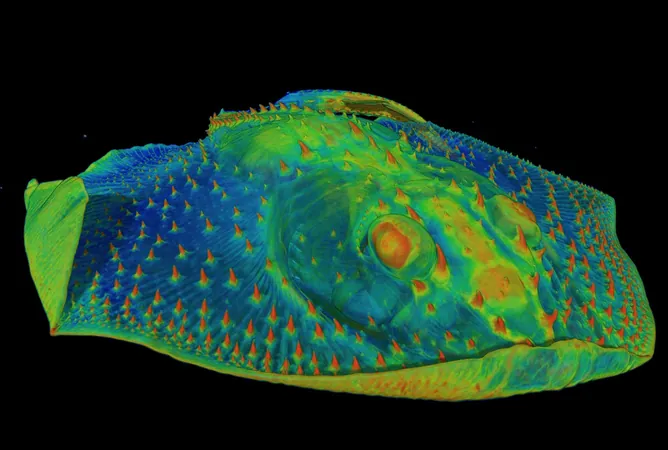
From Ancient Armor to Tooth Sensation: The Surprising Origin of Teeth
2025-06-06
Author: Jessica Wong
Discovering Ancient 'Fish Flakes'
When Yara Haridy, a paleontologist at the University of Chicago, showcases her fossils, she often faces disappointment. Unlike the impressive bones of dinosaurs or spiral seashells, her specimens—dubbed "fish flakes"—look more like dust or the remnants at the bottom of a cereal box. These tiny fossils are too small to excavate directly; instead, scientists dissolve layers of rock in acid to reveal the hidden remnants. This ingenious method led to the discovery of minuscule fossils in Cambrian rocks.
The Evolutionary Leap of Vertebrates
Earth's earliest vertebrates resembled squishy worms with no hard structures. Then, following a notable 20-million-year hiatus, the fossil record reveals the existence of vertebrates resembling small armored tanks. Haridy aims to uncover transitional fossils that bridge the gap between these primitive organisms and fully formed fish.
An Unexpected Discovery: The Truth About Teeth
Initially seeking the dawn of vertebrate fish, Haridy's research veered off course when she reclassified Anatolepis, once thought to be the earliest vertebrate, as an invertebrate. In her recent publication in Nature, she reveals that all vertebrate teeth, including ours, evolved as sensory structures from the exoskeletons of ancient armored fish.
Exciting New Insights in Paleontology
Gareth J. Fraser, an evolutionary biologist, praised Haridy's findings, emphasizing the implications for understanding the original functions of teeth. As she combed through academic literature on early vertebrates, she frequently consulted Karma Nanglu, an invertebrate specialist, with queries about questionable fossils, honing in on important findings.
Scans That Change Everything
The research zeroed in on Anatolepis, approximately 500 million years old, which exhibited features of early vertebrates—specifically, odontodes, tiny bumps found in teeth. To gather clearer images of these delicate fossils, Haridy utilized cutting-edge particle accelerators at Argonne National Laboratory, capturing intricate 3D models and showcasing the exquisite details of these ancient structures.
The Anatomy of Misunderstanding
To her dismay, Haridy discovered that the odontodes of Anatolepis resembled those of fossilized arthropods, indicating it was not a vertebrate after all. This revelation underscored the complexity of evolution and the misperception that vertebrates are inherently more advanced.
Sensory Structures: A Deeper Connection
The link between teeth and sensory function reignited curiosity. Haridy ventured to find out how ancient structures resembled modern teeth, even experimenting with catfish to trace nerve connections in their external teeth. This led to insights into the dual theories explaining the evolution of teeth.
Bridging the Gap in Evolutionary History
While the ongoing debate between the 'outside-in' and 'inside-out' theories continues, Haridy's study bolsters the former, providing a crucial piece in the evolutionary puzzle. Her work clarified how our teeth connect us to a broader evolutionary narrative.
The Quest Continues
Even though Haridy did not uncover the earliest vertebrate, she significantly advanced our understanding of dental evolution, illuminating why we experience pain when biting into something cold. Yet, the ultimate goal remains: finding the missing link between squishy creatures and sophisticated fish.

 Brasil (PT)
Brasil (PT)
 Canada (EN)
Canada (EN)
 Chile (ES)
Chile (ES)
 Česko (CS)
Česko (CS)
 대한민국 (KO)
대한민국 (KO)
 España (ES)
España (ES)
 France (FR)
France (FR)
 Hong Kong (EN)
Hong Kong (EN)
 Italia (IT)
Italia (IT)
 日本 (JA)
日本 (JA)
 Magyarország (HU)
Magyarország (HU)
 Norge (NO)
Norge (NO)
 Polska (PL)
Polska (PL)
 Schweiz (DE)
Schweiz (DE)
 Singapore (EN)
Singapore (EN)
 Sverige (SV)
Sverige (SV)
 Suomi (FI)
Suomi (FI)
 Türkiye (TR)
Türkiye (TR)
 الإمارات العربية المتحدة (AR)
الإمارات العربية المتحدة (AR)